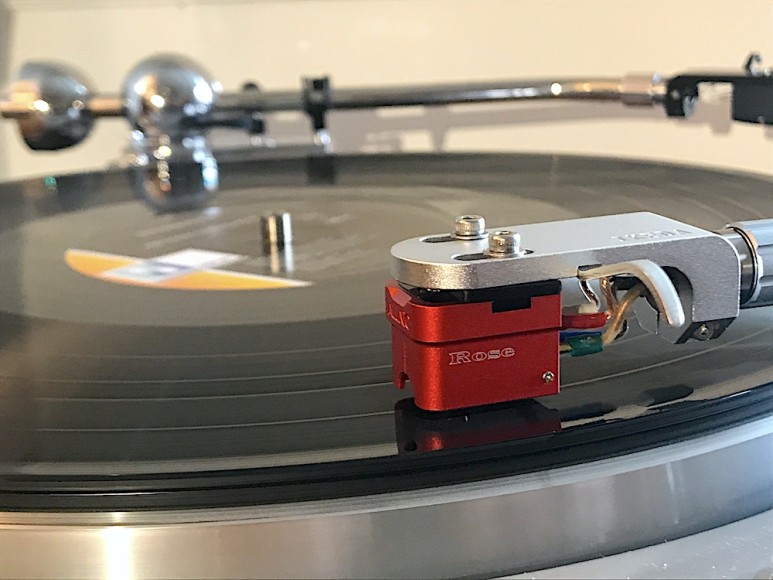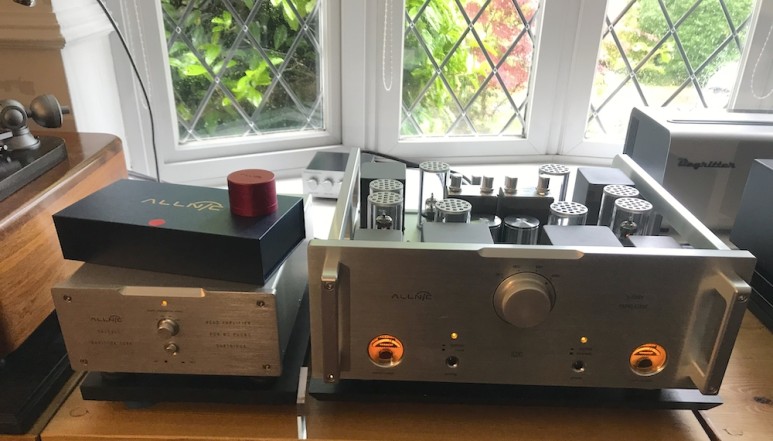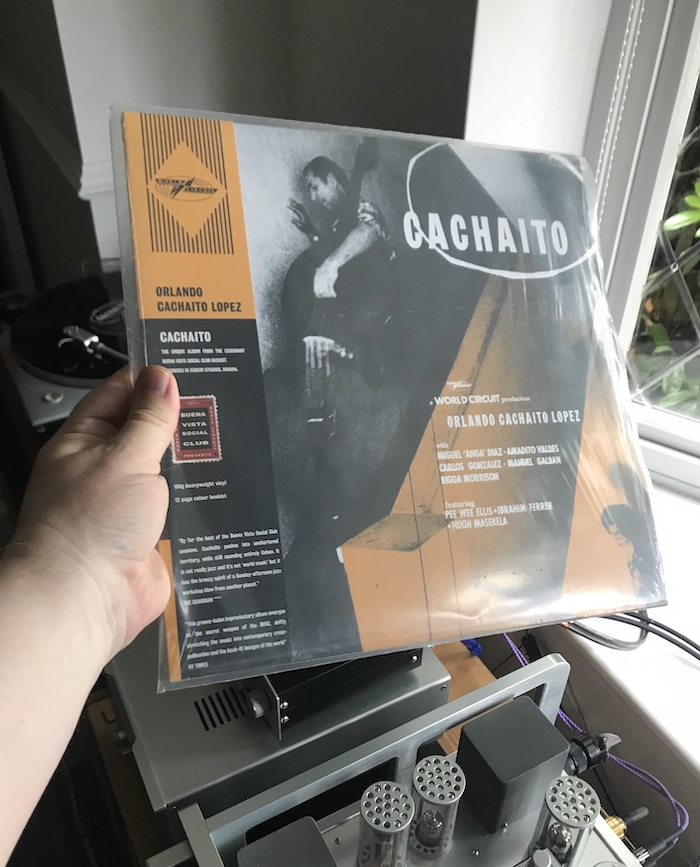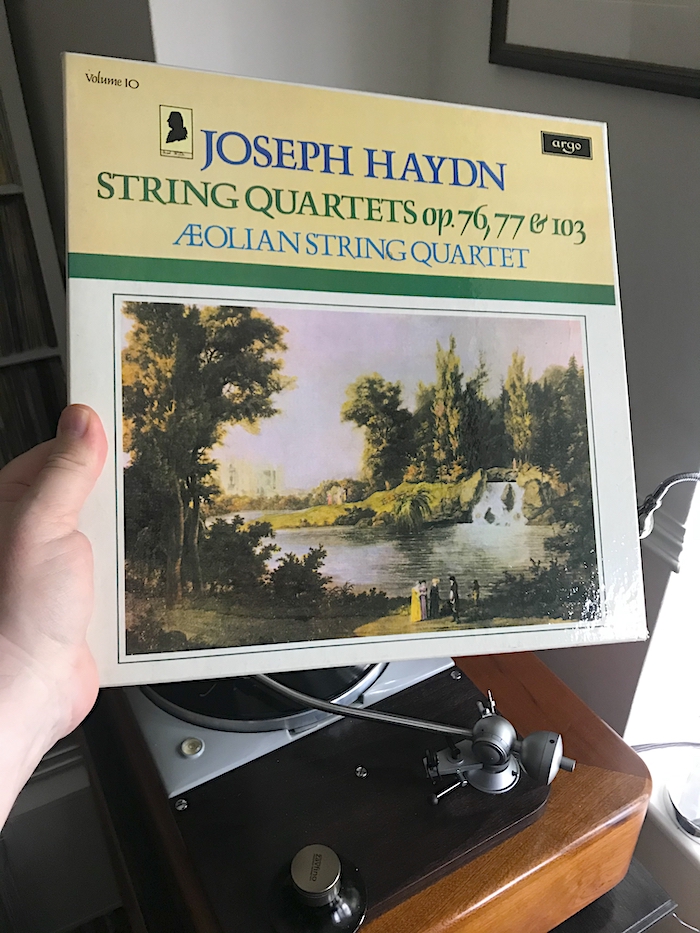MC 카트리지 로즈(Rose)
업체 거래간 개인 정보 유출에 주의하시고 본문의 연락처보단 상단의 업체 연락처로 연락하시기 바랍니다.
가급적 업체 주소지로 방문해서 직거래하여 안전한 거래되시기 바랍니다.하이파이클럽 직거래장터에 등록된 판매, 구매, 교환 물품은 개인 또는 업체가 등록한 것으로 하이파이클럽은 등록을 위한 시스템만 제공하고 내용이나 당사자간 거래에 대해 일체의 책임을 지지 않습니다.
더 많은 분들의 사랑을 받기 위해 새로운 모델이 태어났습니다.
이름도 아름다운 “Rose” !!!
얼마전 Amber를 통해서 역대 퓨리타스 시리즈 사운드의 정점을 찍은 올닉에서
더 많은 분들이 좀 더 쉽게 접근할 수 있는 가격대의 로즈를 만들었습니다.
가격은 상대적으로 많이 편안해졌지만 성능에서는 여전히 커터헤드 방식의 전통을 계승합니다.
장미나무의 가시처럼 특유의 예리하고 선명한 라인은 여전히 간직하고 있습니다.
커터헤드 방식 특유의 탁월한 좌우분리도와 안길이 깊은 사운드는 여전합니다.
또한, 착색감없는 음색도 동일합니다.
하지만 캔틸레버가 보론에서 알루미늄으로 바뀌고 조금 더 완만한 형태의 스타일러스의 채용 때문인지 사운드에서는 좀 더 풍성해지고 음상도 살짝 두꺼워 진 것 같습니다.
이제 전통적인 SPU타입의 카트리지에서 처음 올닉카트리지를 접하실 때 느끼시는 낯설음은 걱정하지 않으셔도 될 것 같습니다.
출력전압은 살짝 높아져서 주변기와의 매칭 또한 한결 수월해질 것 같습니다.
매력있는 동생의 등장으로 은근히 형이 걱정되는 마음으로 새로운 바늘을 소개 해 드립니다.
다음은 얼마전 영국의 동호인 올린 내용을 블로그에서 가져왔습니다.
국내 뿐 아니라 세계로 수출되어 소개되고 있는 올닉 신형 카트리지들에 대한 리뷰내용이 점점 많아지고 있습니다. 올닉 아날로그 제품의 새로운 전환기를 맞이하고 있는 듯 합니다.
영국의 전문적인 음악가로 알려진(organist, harpsichordist, sometime choirmaster and Lieder accompanist) Tom Knight 입니다. 이사람은 진정한 음악애호가로 냉정한 평을 하는 사람입니다. 평론가라기보다는 애호가로 올닉의 아날로그관련 제품을 직접 구매하여 사용하는 분이며, 이번에는 ROSE를 구매하여 자신이 애용하고 있던 Miyajima Madake와 비교시청한 뒤 그 시청기를 올렸습니다.
whatsbestforum.com 은 전문가 수준의 글과 토론이 많이 이루어지는 공간입니다.
Tom의 글도 자세히 읽어보면 매우 사실적이고 냉철한 평으로, 시간이 지남에 따른 변화를 자세하게 기술하고 있습니다.
위의 사진과 같이 야노비츠의 슈베르트 가곡, 재즈, 하이든의 현악사중주 등을 감상하면서 공간감이나 고역, 저역 등의 시실적인 표현을 하고 있습니다.
마지막에 정리된 글을 보면
I won’t ramble on any more but I’m well impressed, 15 hours in. I’ll report back as things develop but my sense is, this cartridge is going to cause a bit of a fuss in the not too distant.
나는 더 이상 이러저러한 말을 않겠지만, 15 시간 만에 깊은 인상을 받았습니다. 상황이 발전함에 따라 다시 리포팅할 것입니다만, 내 감각으로는 이 카트리지가 그리 멀지 않은 때 약간의 소란을 일으킬 것입니다(센세이션을 이르킬 것이라는 뜻).
주요 원문내용은 다음과 같습니다.
Well first proper listening impressions … short version: this is an impressive performer.
My benchmark for the last four years or so has been the Miyajima Madake. I have had quite a few other stereo cartridges to hand over that period, notably the Ikeda 9TT and earlier cantileverless 9C III, Ortofon SPU Royal N and vintage SPU Gold, the delightful SAEC C3 and C1 (a pair of little known vintage gems made by Excel, latterly creators of Etsuru), Fidelity Research FR-7 (in musicality, a better cartridge than the current 9TT), Audio Note Io2 – and probably a few others I’ve forgotten. These in general are all very low or fairly low compliance and suit rather well my Schopper’d TD124/Ikeda IT-407 arm setup. (I also run an Ikeda IT-345 dedicated to mono).
As a classical musician myself (organist, harpsichordist, sometime choirmaster and Lieder accompanist) I tend not to be too impressed by ‘hifi’ attributes. A cartridge can provide floods of ‘detail’ and a near-‘holographic’ soundstage, and fail to move me. Many Lyras fall into that bucket for me – I owned a few in my detail-chasing days. On the other hand, some others seem to extract emotion wonderfully and get the listener’s body in sympathetic motion, but can be missing some of the detail you know is on the disc - some of the best MM cartridges are in this bracket. An antidote to both extremes, the Madake has been my go-to cartridge since I bought it, having previously owned Miyajima Shilabe, Takumi and Kansui (as well as several Miyajima monos) – you could say I’m a Miyajima fan. The Miyajimas don’t major on hifi fireworks but somehow communicate music in a coherent and integrated way that can be quite extraordinary. For me this extends to their step-up transformers. The Madake is also the most silent cartridge I own in the groove.
Sometimes though, you want a little more air, a little more zing, a little more sense of sound waves crashing into each other and filling the room. When I sit down at my harpsichord and play, I have a strong sense of sound production being a physical process, taking a while to start and stop – I can feel the jacks pluck and reset, I can hear the strings sound, the felts start to work as the key releases and they fall but take a moment to have their full dampening effect. It can take me aback at the end of a piece just how long the sound takes to die off. Something that can communicate that feeling, that liveliness of an instrument or set of vocal cords vibrating in physical space, not just rhythm and timbre but the overall kinetics, and convey, too, the musical intent and the unspoken communication between multiple performers – for me that’s what it’s all about.
I had high hopes for the Allnic Rose in this regard, positioned as a slightly more laid-back alternative to the Amber, an alternative take on the Puritas rather than a direct descendant or replacement. The Puritas had a bit of a reputation as a dramatic musical performer, but also as a bit of a thoroughbred, hard to tame and sometimes used in inappropriately light tonearms for its low compliance (hence gathering extremes of opinion). For some reason, I had a good feeling about the Rose, having discussed its characteristics with David Beetles of Hammerton Audio, who was heavily involved in KS Park’s multi-year development project to create a successor to the Puritas (more than one as it turned out).
A favourite alongside the Madake is my Audio Note Io2 – used with the Miyajima ETR-Stereo SUT as the 1:100 step-up ratio required is beyond the range of the Allnic HA5000 head amp. While the Madake majors on musical cohesion and timing, the Audio Note provides more detail and treble headroom, while at the same time being a bit more neutral and dispassionate. I previously owned one, with a matching Kondo-era AN-S6c SUT, for about four years, sold up about 7-8 years ago in frustration not with its hifi performance – which is impeccable in every tick-box regard – but with its utterly competent but slightly bloodless take on things. It"s only relatively recently I acquired another.
Would the Allnic provide something close to the emotion and corporeality of the Madake, with some of the neutrality and detail of the AN Io2? I had high hopes as I’ve been increasingly impressed with KS Park’s approach, having bought over the last year and a half the H7000V phono stage (part of a project to replace my EAR 912), and subsequently the HA5000 head amp – the latter not so much a replacement for my Miyajima SUT but as an alternative. There’s a coherent philosophy in KS Park’s approach that I’m quite attracted to. The H7000V in particular was the final stop in auditioning close to a dozen phono stages.
Setup on the Allnic Rose was a little trickier than I anticipated, and changed over time. Initially I was struggling a bit with aggressive strings and not-quite realistic pianos, as the suspension took a few hours to settle down. I would say it took a good four hours of twiddling to get sorted, though I think part of this was just being new out of the box - so perhaps much of the fiddling was simply premature. I would encourage anyone who gets hold of a Rose (also, I suspect, an Amber) to give themselves a bit of time to shake out the newness – otherwise you are shooting for a moving target.
After 4-5 hours of random play, I decided to hone the setup on one of the toughest records I know to get right, but also one of the most rewarding: the 5-LP box set of Schubert Lieder, recorded by Gundula Janowitz and Irwin Gage in 1978 (rather hopefully labelled Volume 1 but there was, sadly, never a Volume 2). Plucked from relative obscurity in her early 20s by Herbert von Karajan, Janowitz was as the solo soprano in the 9th symphony vocal quarter in his first stereo Beethoven cycle recorded in 1961 and 1961. Janowitz was 41 and at the height of her powers in 1978, when she recorded the Lieder set, intended to be a riposte to the monumental three-volume 27 LP ‘complete’ Schubert set recorded some years previously by Dietrich Fischer-Dieskau and Gerald Moore, containing those Schubert songs definitively for female voice. Janowitz’s voice has exceptional beauty and purity (fans of The Shawshank Redemption will have heard her duet with Christina Ludwig, an aria from the Marriage of Figaro, played over the prison loudspeakers), but it’s the space where that beauty meets her interpretive ability, alongside Gage’s thoughtful accompaniment, that is what makes the set something rather special. I don’t think her Du dist die Ruh, Gretchen am Spinnrade or Der Hirt auf dem Felsen have been bettered, while when it comes to Richard Strauss, her Vier letzte lieder is up there with Schwartzkopf’s as one of only two essential versions in anyone’s collection.
Getting that vocal purity at full amplitude without distortion is quite an ask though, especially with a cartridge that’s new out of the box. In the end, it was was accomplished by lifting the VTF from the recommended 2.0g to something around 2.4g, reduced to 2.3g as the hours clocked up beyond 8-10. In this time I was also playing from the wonderful Argo Haydn string quartet project which in the mid-70s was the first to record all of the quartets. Until setup was complete, strings were a bit ragged, but they too eventually snapped into place.
So where am I now about 15 hours in? Well any raggedness or lack of top end control has gone, replaced, not with a bland smoothness, but with a confidence that is reassuring. Timbre is spot on, width as it should be, depth apparent but not exaggerated, bass seemingly unlimited, percussion sparkling, spatial presence wide and realistic. But it’s also communicating emotion very well indeed.
A futher dimension is the difference in presentation between the HA5000 head amp and my Miyajima SUT. The head amp is a fantastic match, doing that magical thing of pressurising the note and allowing the full dynamics to come flooding out. I find the head amp needs at least 0.2 mV minimum to really sing, which makes the Madake borderline on 0.23mv, but on 0.4mV, the Rose is in its element. By contrast though, while undoubtedly a shade less dynamic, a touch more beauty comes through with the SUT (on similar gain to the head amp of 1:33). My sense is that this cartridge shines with either, though listening impressions might vary between the two.
I’ve switched from classical to jazz this evening – album entitled Chachaito by the eponymous bass player – I think the technical term is awesome. The percussion in particular just puts a smile on my face.
Supposedly the boron cantilevered Amber gives a bit more (of what, I guess it’s up to others to say, since I don"t have one for comparison), but I would say for mainly classical listeners, I wouldn’t overlook the Rose.
I won’t ramble on any more but I’m well impressed, 15 hours in. I’ll report back as things develop but my sense is, this cartridge is going to cause a bit of a fuss in the not too distant.
+++++++++++++++++++++++++++++++++++++++++++++++++++++++++++++++++



오디오멘토스 031-716-3311, 010-4557-5824







